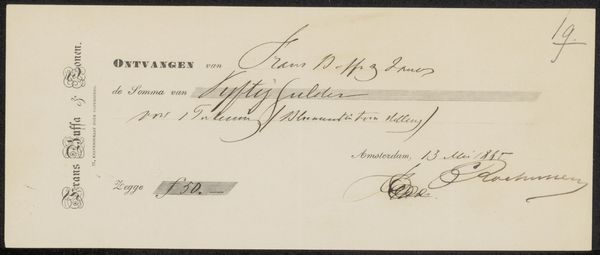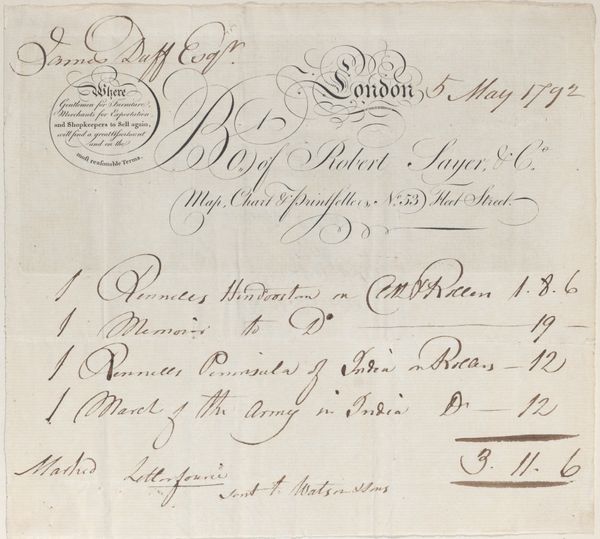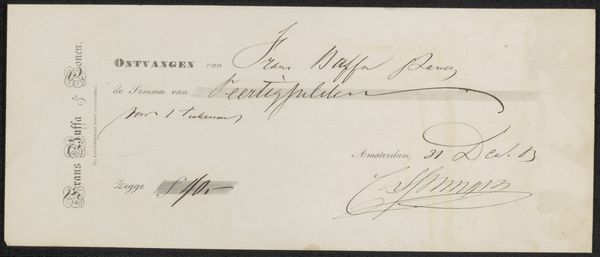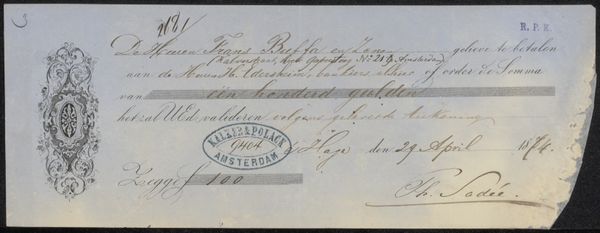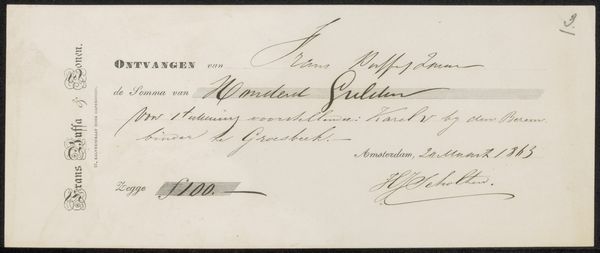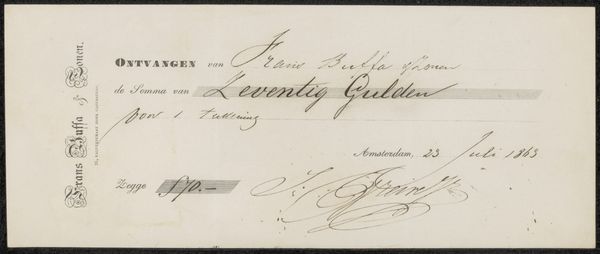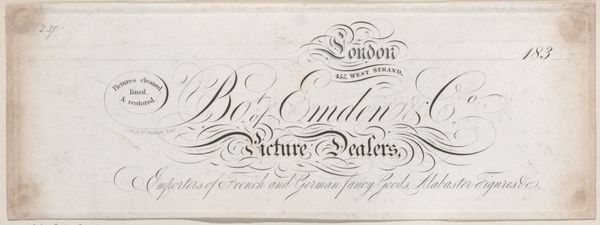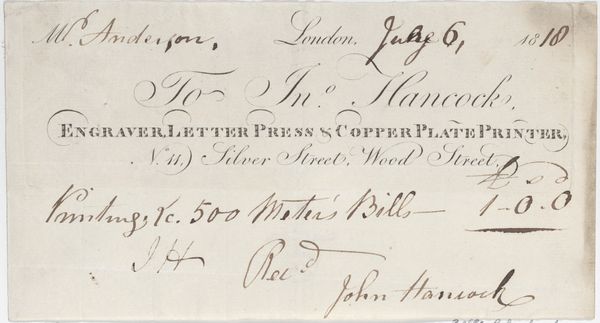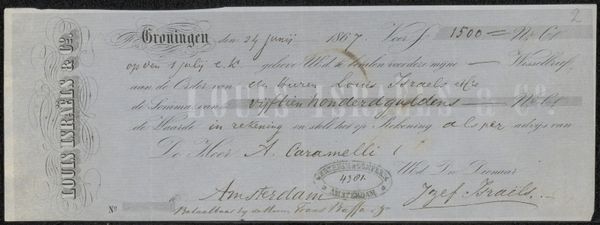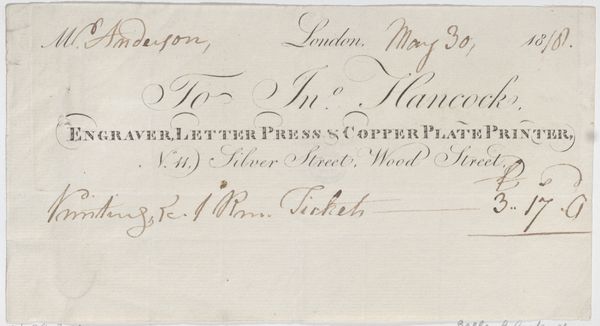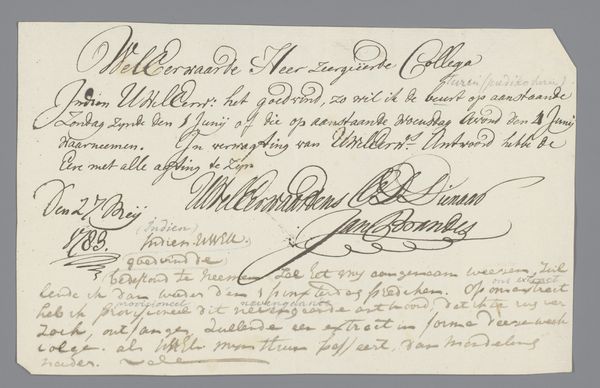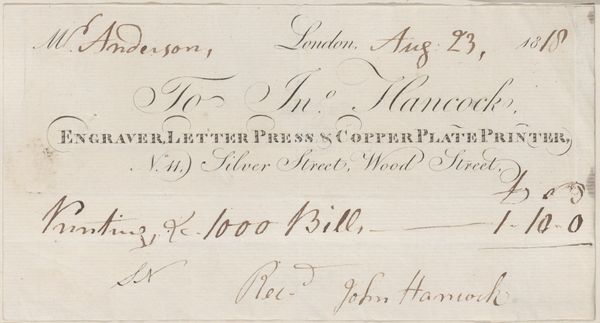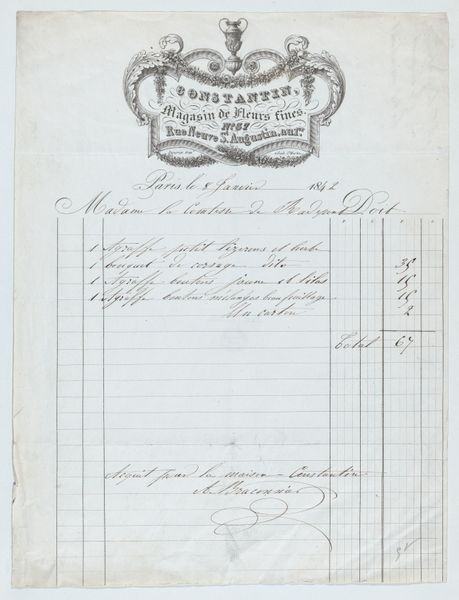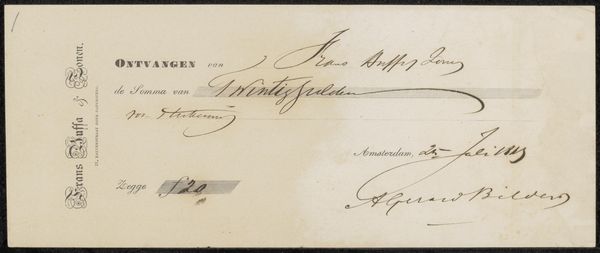
Trade Card for George Fell, Stationer, Bookseller, Engraver and Printer 1800 - 1900
0:00
0:00
drawing, graphic-art, print, typography, engraving
#
drawing
#
graphic-art
#
neoclassicism
# print
#
typography
#
engraving
Dimensions: Sheet: 4 13/16 × 7 5/8 in. (12.2 × 19.3 cm)
Copyright: Public Domain
Editor: Here we have a trade card for George Fell, dating from the 1800s, an engraving combining drawing and typography, found at the Met. What strikes me is its function. It's beautiful, but it was also everyday advertising. What does this intersection of art and commerce tell us? Curator: That’s an astute observation. These trade cards, mass-produced yet finely crafted, speak volumes about the rising merchant class and their aspirations. The card’s Neoclassical style and elegant typography reflect the period’s emphasis on order and refinement, linking George Fell to notions of high culture, wouldn’t you say? Editor: Yes, the lion and unicorn feel very… elevated for something that was likely tossed around! Does this imply a kind of social climbing through printed materials? Curator: Precisely! Businesses used visual culture to assert legitimacy and attract clientele within a very competitive market. The choice of Piccadilly as a location adds another layer of understanding. What did that address communicate? Editor: A prime location equals legitimacy, perhaps even a claim to a wealthy clientele. You’re paying for paper but buying social status, too? Curator: You're beginning to see the interplay of economic forces, artistic expression, and the performance of social class. Printed matter gained influence by reaching a wide public audience. Do you consider printed material as "art" despite its commercial uses? Editor: I never thought about it that way, but definitely seeing how historical context gives "everyday objects" artistic meaning! Thanks! Curator: It all invites us to question what qualifies an object to be "art," and how definitions shift in the tides of society and history. An ordinary paper transformed into so much more!
Comments
No comments
Be the first to comment and join the conversation on the ultimate creative platform.
